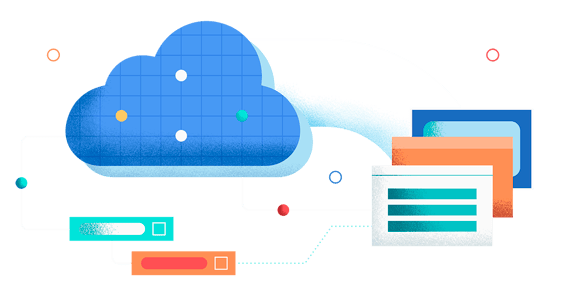Cloud Migrations
Expedite Initiatives
Take advantage of seamless cloud or hybrid migrations with complete data lineage. Set the right expectations, stick to the plan, save resources, and escape the do-break-debug-redo cycle.

Key Benefits
Reduce Project Costs by up to 30%
Every migration has a plan, but with Manta’s enterprise-wide, catalog-agnostic data lineage, it’s finally complete. No blind spots, no muddy waters.
Harness Better Predictability
Understand the impact of your data on each stage of the migration, including during the testing and debugging phase, which can cut the time spent on the analysis phase by up to 70%.
Leave Nothing Behind
With data lineage, each object in the migrated system(s) is mapped, and its dependencies are clearly documented for a seamless transition.
Keep Your Data Migrations on Track
Cloud and hybrid environments are critical for digital transformation efforts.
However, changing your data environment is easier said than done.
In fact, 83% of data migrations exceed budget, fall behind schedule, or simply fail.
On top of that, 80% of organizations that conduct a lift-and-shift migration will not achieve meaningful cost savings.
Don’t let your project become a statistic.
With Manta’s automated data lineage platform, you can avoid falling victim to the common and complex pitfalls during migrations and save time, money, and resources.
How Manta Helps
From start to finish, you can depend on Manta to keep your migration project on track. Set yourself up for a quick, successful, and accurate migration by planning ahead and keeping track of success criteria.
Strategy Phase
Automatically evaluate your data quality, usage, and dependencies and validate your migration plan.
Proof of Concept
Accurately estimate and map out your workload, set expectations, and define your measurements of success.
Data & Apps Migration
Create custom migration plans at an individual app level.
Cloud Transition & Operation
Smooth out testing, debugging, and validation of your migration project from start to finish.
FAQs
What is a good data migration strategy?
Successful organizations use data lineage to complete their migration projects 40% faster with 30% fewer resources. They do this by dividing the system into smaller chunks of objects (like reports, tables, and workflows). Data lineage helps determine how to migrate one part without breaking downstream applications. It can also determine the pieces that can be grouped together to minimize the number of external dependencies.
How long does data migration take with Manta?
The duration of the migration process depends on many factors such as the volume of data and the complexity of the migrated system. But on average, how long does data migration take? Based on reports from our customers, Manta can cut the time spent on the analysis (assessment and planning) phase of the migration project by up to 70%.
Read our whitepaper linked below to learn how Manta helped a large customer from the insurance industry resolve quality issues and ditch manual tasks that were slowing down their migration process to smoothly move their legacy Teradata database with more than 200,000 objects to a modern Snowflake cloud-based solution.
Can Manta be used for data migration preparation?
Manta can be utilized for data migration preparation to better understand how a legacy environment is architected, which helps when preparing for a migration project. Specifically, it allows you to accurately assess the complexity of the to-be-migrated system and its sources and dependencies. It enables the migration team to provide accurate estimates of the time and effort it will take to complete the project. It also allows you to plan the migration phases with respect to the dependencies in the environment.
How can I migrate server and data fast?
Carrying out data migrations is tricky because of all the unknowns and blind spots in large legacy environments. To migrate quickly and easily, use automated data lineage to ensure that you have mapped the migrated systems and have a full and complete overview of the data dependencies before actually starting the migration project. Such an overview allows you to see how the planned migration will affect your systems, comply with data privacy and safety requirements, and divide the process into smaller steps while ensuring that there are no surprises regarding impacted systems, unexpected complexity, or forgotten pipelines.
How long does the system migration process take?
The duration of the migration process depends on many factors such as the volume of data and the complexity of the migrated system. Based on reports from our customers, Manta can cut the time spent on the analysis (assessment and planning) phase of the migration project by up to 70%.
How can I get started with Manta?
Implementing Manta is as simple as guiding Manta’s scanners to the systems that need to be scanned. The scanners then take control of extracting metadata from the systems and analyzing it to provide an end-to-end data lineage graph.
Do I need to be CDMP certified to use Manta?
Manta is designed to serve all kinds of data users, from business users to more tech-savvy data engineers and professionals. You don’t have to be CDMP certified to use Manta. The results generated by Manta are tailored to your needs and will help you in any aspect of data management.
Will we need special training to use Manta data lineage?
At Manta, we strive to create a user experience that can easily be understood by a wide variety of users, not only technical users with a deep understanding of their systems but also business users who may be interested in what data was used for business-critical reports. However, we also provide end-user training for Manta to make sure that our customers can obtain the full value of the lineage provided by Manta.
How do I understand my legacy/data environment to prepare for my migration?
When preparing for a migration project, Manta helps to better understand how a legacy environment is architected. The tool enables you to accurately determine the complexity of the system that will be migrated, as well as its sources and dependencies.
Why augment Snowflake with data lineage?
Snowflake is often used to generate reports, applications, or other relational databases, so an auditable blueprint of its data lineage can provide huge benefits. With automated lineage gathering, business outcomes are boosted and migration benefits are gained by reducing the time and cost of transferring data to Snowflake.
What does Manta support in Snowflake?
Snowflake components currently supported by Manta’s scanner:
- Data dictionaries—get lineage for asset catalogs in hierarchical databases
- Scripts—lineage for custom SQL and ETL activities in Manta’s native UI
- Views—visualize the SQL logic for user-defined tables to boost data accuracy and trust and speed up reporting
- Functions—extract metadata from Snowflake functions for custom logic and pipeline insights
- External tables—see connections and dependencies across offsite data sources for queried files
Should data lineage be part of a data migration strategy?
With no visibility across data flows to guide the process, migrating from legacy systems to the cloud or adding new data sources to the cloud can become complex. In order to increase visibility and to avoid the dangers of not knowing, lineage automation shows you where data comes from, how it is used, and how it is transformed as it flows between systems.
By mapping the data inventory with lineage, you clarify what is being used and should be migrated and what should be decommissioned.
What is a successful data migration strategy?
A successful data migration strategy is to divide the system into smaller chunks of objects (reports, tables, workflows, etc.), which poses other challenges—how to migrate one part without breaking another, and how do we even know what pieces can be grouped together to minimize the number of external dependencies? A migration project also represents an opportunity to consolidate or entirely remove components that are no longer in use to avoid migrating worthless data. But even that is tricky, as it requires the ability to view all dependencies in the environment prior to migration. Successful organizations use data lineage to complete their migration projects 40% faster with 30% fewer resources.
Learn More About Manta for Cloud Migrations
CASE STUDY
Data Lineage for Smooth, Controlled, Effective Migration to the Cloud
Read how Manta helped a large customer from the insurance industry resolve quality issues and ditch manual tasks that were slowing down their migration process to smoothly move their legacy Teradata database with more than 200,000 objects to a modern Snowflake cloud-based solution.
Download Now >
Let’s Talk
Don’t get burned in a major migration project by having the wrong lineage. Schedule a demo with our team to see how we can help.
